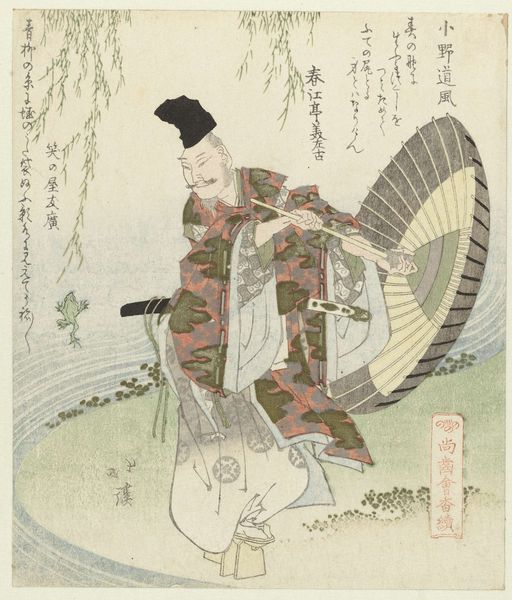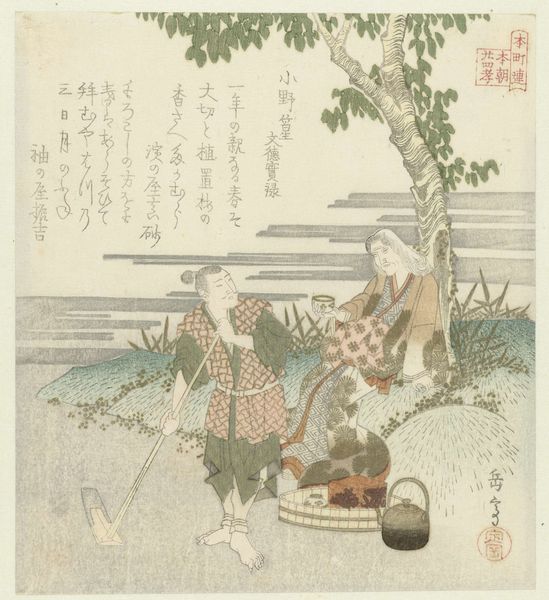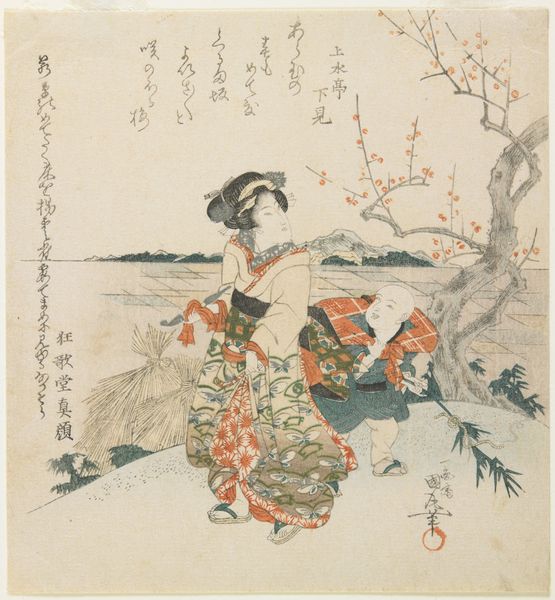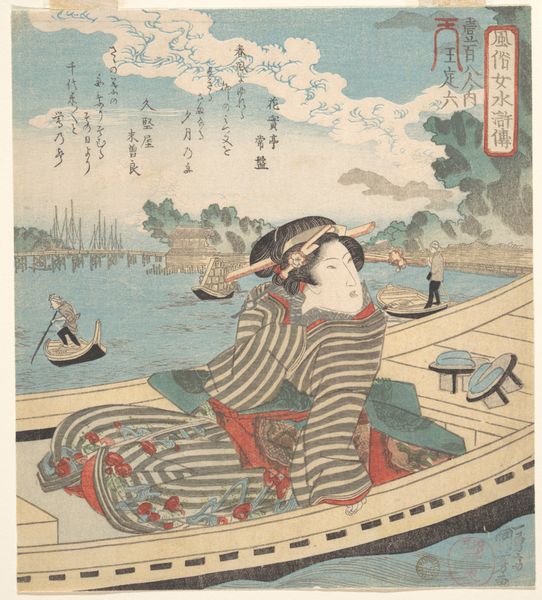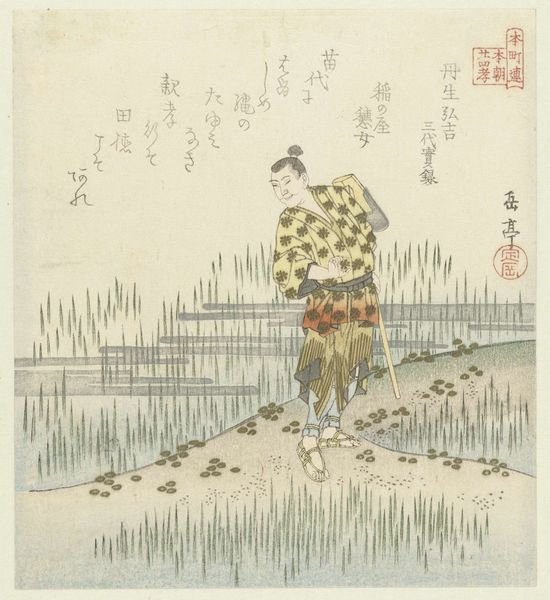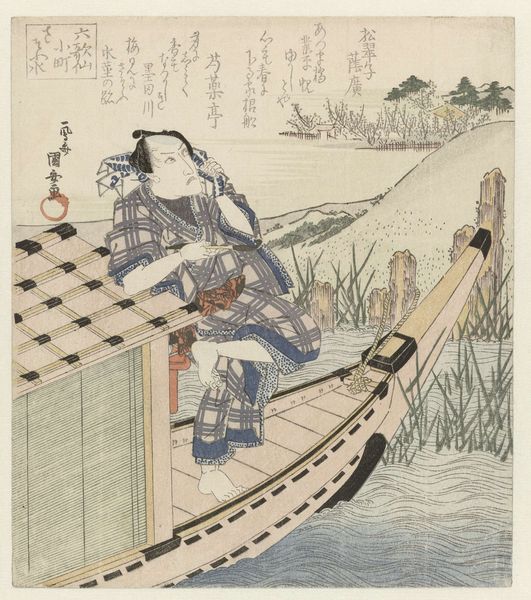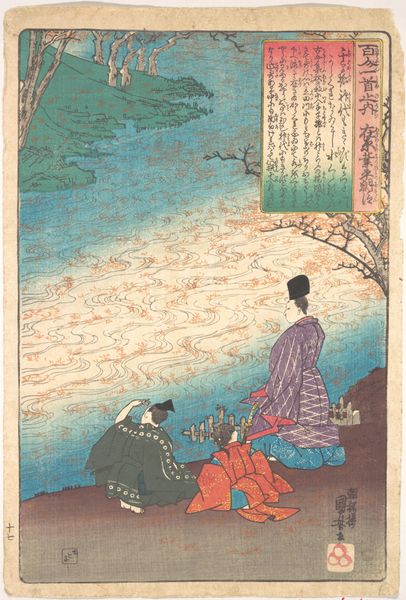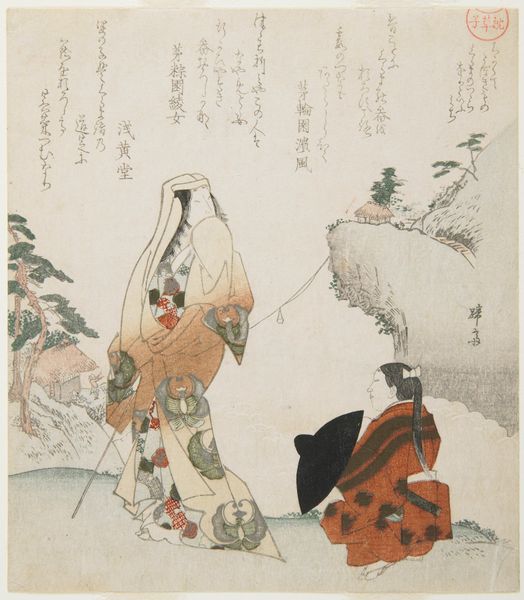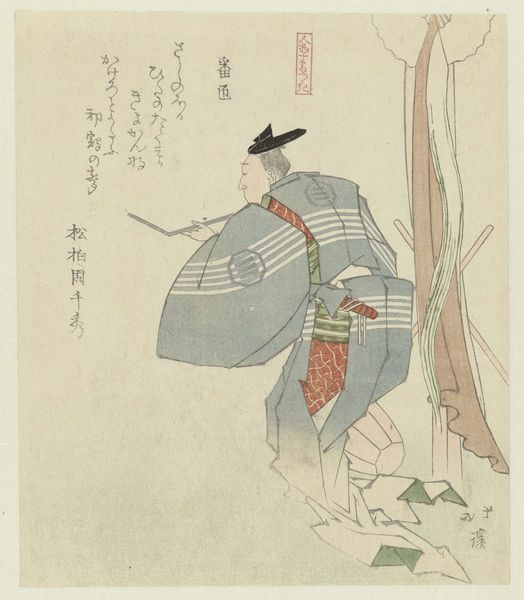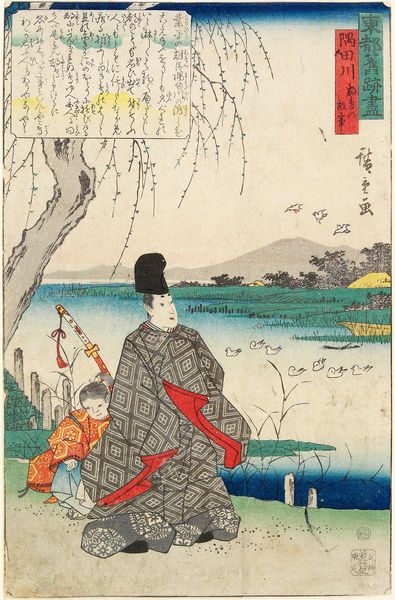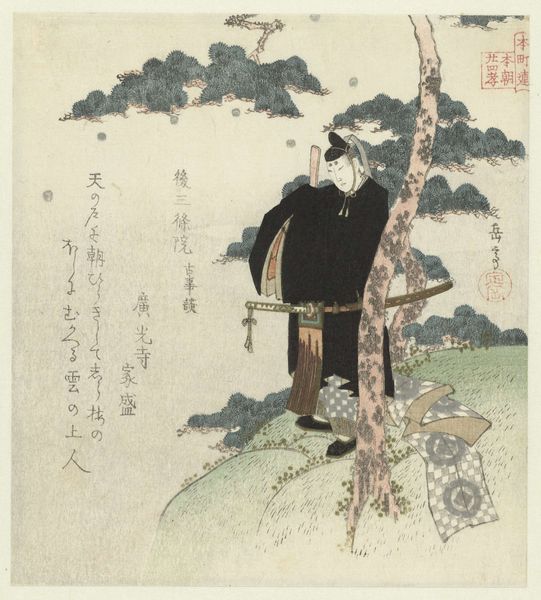
Twenty-four Japanese examples of filial piety for the Honchôren c. 1821
0:00
0:00
yashimagakuteiwudaoyueting
Rijksmuseum
# print
#
asian-art
#
landscape
#
ukiyo-e
#
figuration
Dimensions: height 211 mm, width 187 mm
Copyright: Rijks Museum: Open Domain
Curator: It exudes a sort of contemplative peace, doesn’t it? It's quiet but poignant. Editor: That's exactly the word. I get an initial feeling of serene loneliness, looking at it. All that space, that red bridge barely visible, the lone figure… Curator: It’s a print from around 1821, part of a series by Yashima Gakutei. The full title is "Twenty-four Japanese Examples of Filial Piety for the Honchôren.” This example, a print using the ukiyo-e method, is now held in the Rijksmuseum collection. It really speaks to the artistic interests of that time. Editor: Filial piety… looking at the figure's posture, leaning against the tree almost seeking support, that cultural context really adds depth. Is it possible the landscape itself a metaphor for family? Curator: It absolutely could be interpreted that way. Trees often symbolize lineage and rootedness. Also, remember filial piety emphasizes not just obedience, but also respecting ancestors. The bridge could symbolize transition from the world of the living to a world beyond… and that is probably reading a lot into that very simple little red archway! Editor: Still, it makes you think! That red really pops against all the softer colors—what a brilliant, intuitive accent. And even the seemingly empty space carries weight; I wonder if the artist deliberately invoked a sense of lingering regret or longing? Curator: Possibly, though the empty space could also represent opportunities. The person may also find calm in a still environment, taking pleasure from viewing it or simply living close to the land, reflecting cultural values. Editor: What really grabs me, actually, is the intimacy in its execution. Despite dealing with universal themes, it's so understated and personal, as though revealing an old secret in the shade of the tree… It feels so Japanese! Curator: I concur, and thanks for highlighting this artwork! It’s nice to see a traditional theme being given life in such an artistic form. Editor: And now that the dialogue has enlightened you even more, onward! Let's proceed with a fresh perception for the artwork coming up.
Comments
No comments
Be the first to comment and join the conversation on the ultimate creative platform.
